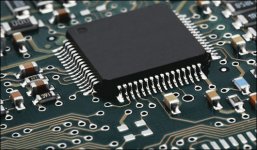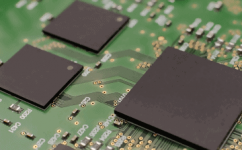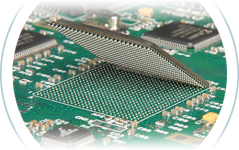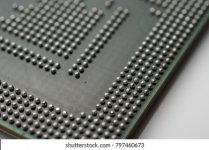Hey guys I am buying a 2013 duramax with the infamous tcm issue through my work. I know the tcm is pretty much non existent anywhere right now. My question would be is there a company that I can have this rebuilt? And how do I go about verifying that it is indeed a tcm? Chevy diagnosed it but they only spent like 45min diagnosing it. Just curious what everyone is doing about this issue?
Transmission control module issue
- Thread starter Reese99
- Start date
You are using an out of date browser. It may not display this or other websites correctly.
You should upgrade or use an alternative browser.
You should upgrade or use an alternative browser.
G7 Computer charges $225. https://www.g7computers.com/collect...ir-service/products/chevrolet-computer-repair
I was reading there description. They claim to have a 99% success rate. On the one's that fail during a flash or the Software/ chip is corrupted, they replace the chip and re-flash to OEM Software. This alone is about 40% of what the repair.Xemodex.com is repairing them for $1200. There have been a few positive feedback testimonials given by people. I have 7 cores I'm going to send to them and have done, and I know some other shops have a lot more cores than me they will be sending.
I have been wondering what fails in these units besides the chips.
I actually shipped mine off last Thursday to them and am supposed to get it back tomorrow. Super stoked with the quick service. Only took a week!Xemodex.com is repairing them for $1200. There have been a few positive feedback testimonials given by people. I have 7 cores I'm going to send to them and have done, and I know some other shops have a lot more cores than me they will be sending.
I did send mine to them and it's expected back here tomorrow. I'll look and see what the issue was and let you know what they found!I was reading there description. They claim to have a 99% success rate. On the one's that fail during a flash or the Software/ chip is corrupted, they replace the chip and re-flash to OEM Software. This alone is about 40% of what the repair.
I have been wondering what fails in these units besides the chips.
I sent mine off to them last Thursday and its supposed to be here tomorrow. Super quick service. Only had it a weekXemodex.com is repairing them for $1200. There have been a few positive feedback testimonials given by people. I have 7 cores I'm going to send to them and have done, and I know some other shops have a lot more cores than me they will be sending.
Cool ! I wasn't aware any one was able to repair them until today. I would be curious to see what they found if they put it on the invoice.I did send mine to them and it's expected back here tomorrow. I'll look and see what the issue was and let you know what they found!
Make sure to give us an update once you have it back in! DeanI sent mine off to them last Thursday and its supposed to be here tomorrow. Super quick service. Only had it a week
Well I got my tcm back today. Got stuck at customs or something and got pushed back to today. Took the pickup for a long drive and did awsome! I'll be driving it a lot now that we're getting into camp season so we'll see how it does this summer. The repair sheet that came back with the tcm has the following for repairs done. -NEW RAM. REBALLED FLASH + MCU. UNIT HAS COMMUNICATION
-SELF TEST PASS-
For the initial diagnostic test under DTC STORED/FAULTS FOUND:
-DRY JOINTS ON BGA CHIPS
All of this kinda goes right over my head but I do know before I shipped it I couldn't do anything with the pickup and I was able to drive it today and it did awsome. The fee was $1200 plus I paid overnight shipping for $79 (there is a cheaper shipping). I was told it'd be about a 3 week wait time but from the day I shipped it to the day I got it back it was only 7 business days. Super happy with turn around time and service done so far. Highly recommend
-SELF TEST PASS-
For the initial diagnostic test under DTC STORED/FAULTS FOUND:
-DRY JOINTS ON BGA CHIPS
All of this kinda goes right over my head but I do know before I shipped it I couldn't do anything with the pickup and I was able to drive it today and it did awsome. The fee was $1200 plus I paid overnight shipping for $79 (there is a cheaper shipping). I was told it'd be about a 3 week wait time but from the day I shipped it to the day I got it back it was only 7 business days. Super happy with turn around time and service done so far. Highly recommend
When a chip is reballed, the solder pads are cleaned off and new solder is added. The newer chips don't have wires that extend down to the board like the older stuff. They have pads. They are spread out along the underside of the chip. These don't tolerate heat cycling as well and the solder joint can crack. There are two basic ways to fix it. Reflow the solder by putting a little bit of liquid flux under the chip, letting it wick under, then heating up the chip in a prescribed manner that will cause the solder to melt and rebond. This is relatively cheap and easy to do but because of the solder type it can recrack again at a later time. The better method is to heat the chip and pull it off. Then clean all the solder and put a newer solder that has better crack resistance on each of the pads. This is the "reball" as the solder will sit on each pad like little balls. Then you place the chip back down on the board and do the prescribed heating to melt the solder and have it bond to the contacts on the board.
If they reballed it then that's good. And also explains the cost. I've only done the reflow method and it works but you have to keep in mind the risk. Reballed done right with the correct solder should be better then the factory. Also looks like they installed new memory too.
Don't know what a BGA chip is. Will have to look that up
Edit: just looked up BGA. It's just "ball grid array". Basically the arrangement of the pads or contact points on the chip.
Older style chips

Newer style with the ball grid

And the solder pads underneath

Here's a good picture of the "balls" of solder

If they reballed it then that's good. And also explains the cost. I've only done the reflow method and it works but you have to keep in mind the risk. Reballed done right with the correct solder should be better then the factory. Also looks like they installed new memory too.
Don't know what a BGA chip is. Will have to look that up
Edit: just looked up BGA. It's just "ball grid array". Basically the arrangement of the pads or contact points on the chip.
Older style chips

Newer style with the ball grid

And the solder pads underneath

Here's a good picture of the "balls" of solder

Last edited:
Excellent info!!! So I am guessing the people that claim they can fix them for a few hundred are just reflowing the solder as I see most of them do not offer a very long warranty - 60 days to 1 year.
Most likely. Probably just squirting some flux under them and hitting it with a heat gun. And hopefully rinsing the flux out afterwardsExcellent info!!! So I am guessing the people that claim they can fix them for a few hundred are just reflowing the solder as I see most of them do not offer a very long warranty - 60 days to 1 year.
Update: new Delco modules have started to be delivered as of yesterday. Thank goodness!

